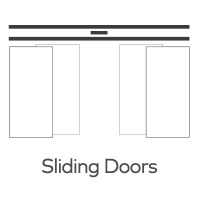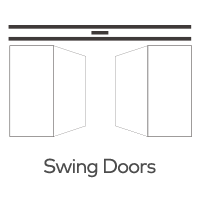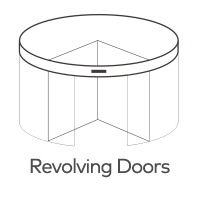What is the lifespan of a typical safety sensor for an automatic door?
Safety sensors are critical components in automatic door systems, ensuring the doors operate safely by detecting obstacles and preventing accidents. Understanding the lifespan of these sensors is essential for maintenance planning and ensuring continuous safe operation. The lifespan of a typical safety sensor for an automatic door can vary based on several factors, including the type of sensor, usage conditions, and maintenance practices. This article explores the expected lifespan of safety sensors, factors affecting their longevity, and best practices for maintaining these sensors to maximize their lifespan.
Typical Lifespan of Safety Sensors
The typical lifespan of safety sensors for automatic doors ranges from 5 to 10 years. However, this can vary significantly depending on the specific type of sensor and the conditions in which it operates.
Infrared Sensors: These sensors, commonly used in automatic doors, generally have a lifespan of 5 to 10 years. They are durable but can be affected by environmental conditions such as dust and moisture.
Microwave Sensors: Known for their reliability and longer range, microwave sensors also have a lifespan of around 5 to 10 years. They are less prone to environmental interference compared to infrared sensors.
Ultrasonic Sensors: These sensors typically last between 7 and 10 years. They are robust but may require regular calibration to maintain accuracy.
Pressure Sensors: Embedded in mats or floors, pressure sensors can last up to 10 years or more, depending on the quality of materials and the level of foot traffic they endure.
Laser Sensors: High-precision laser sensors generally have a lifespan of 7 to 10 years. They are durable but require proper alignment and maintenance to function correctly.
Factors Affecting the Lifespan of Safety Sensors
Several factors can influence the lifespan of safety sensors in automatic doors:
1. Environmental Conditions:
Exposure to extreme temperatures, humidity, dust, and moisture can affect sensor performance and longevity. Sensors installed in harsh environments may have a shorter lifespan.
2. Frequency of Use:
High-traffic areas where sensors are constantly in use can lead to faster wear and tear, reducing their lifespan. Conversely, sensors in low-traffic areas may last longer.
3. Quality of Installation:
Proper installation is crucial for the longevity of safety sensors. Incorrect installation can lead to misalignment, physical damage, and reduced effectiveness, shortening their lifespan.
4. Maintenance Practices:
Regular maintenance, including cleaning, calibration, and inspections, can extend the lifespan of safety sensors. Neglecting maintenance can lead to sensor failure and a shorter operational life.
5. Technological Advancements:
Advances in sensor technology can affect lifespan expectations. Newer models may have enhanced durability and longer lifespans compared to older sensors.
Best Practices for Maintaining Safety Sensors
To maximize the lifespan of safety sensors in automatic doors, follow these best practices:
1. Regular Cleaning:
Keep sensors free from dust, dirt, and debris. Regularly clean the sensor lenses and housings to ensure accurate detection and prevent malfunction.
2. Periodic Inspections:
Conduct regular inspections to check for signs of wear, damage, or misalignment. Early detection of issues can prevent sensor failure and extend their lifespan.
3. Routine Calibration:
Calibrate sensors periodically to maintain accuracy and reliability. Calibration ensures sensors detect obstacles correctly and operate within their specified range.
4. Protective Measures:
Implement protective measures such as weatherproof housings for sensors exposed to harsh environmental conditions. Protecting sensors from the elements can significantly extend their lifespan.
5. Prompt Repairs:
Address any sensor issues promptly. Delaying repairs can lead to more severe problems and potentially shorten the sensor’s operational life.
6. Upgrade When Necessary:
Stay updated with technological advancements and consider upgrading older sensors to newer, more durable models. Upgrading can improve performance and extend the overall lifespan of the sensor system.
Conclusion
The lifespan of a typical safety sensor for an automatic door ranges from 5 to 10 years, depending on the type of sensor, environmental conditions, and maintenance practices. Regular maintenance, proper installation, and protective measures can significantly extend the operational life of these sensors. By understanding the factors that affect sensor longevity and following best practices for maintenance, building managers and homeowners can ensure the reliable and safe operation of automatic doors over the long term.







